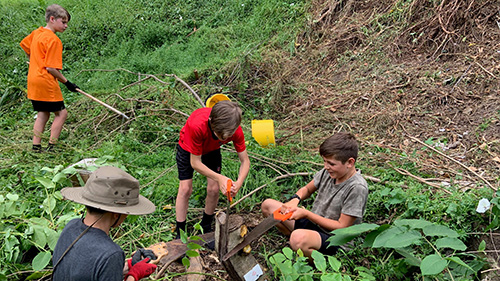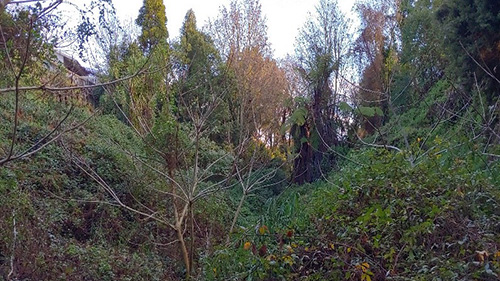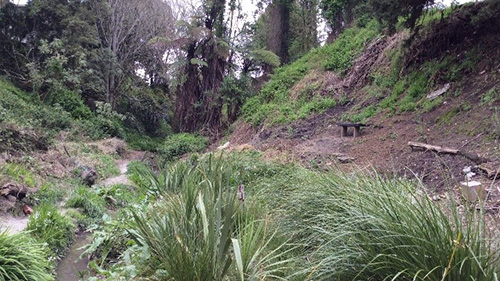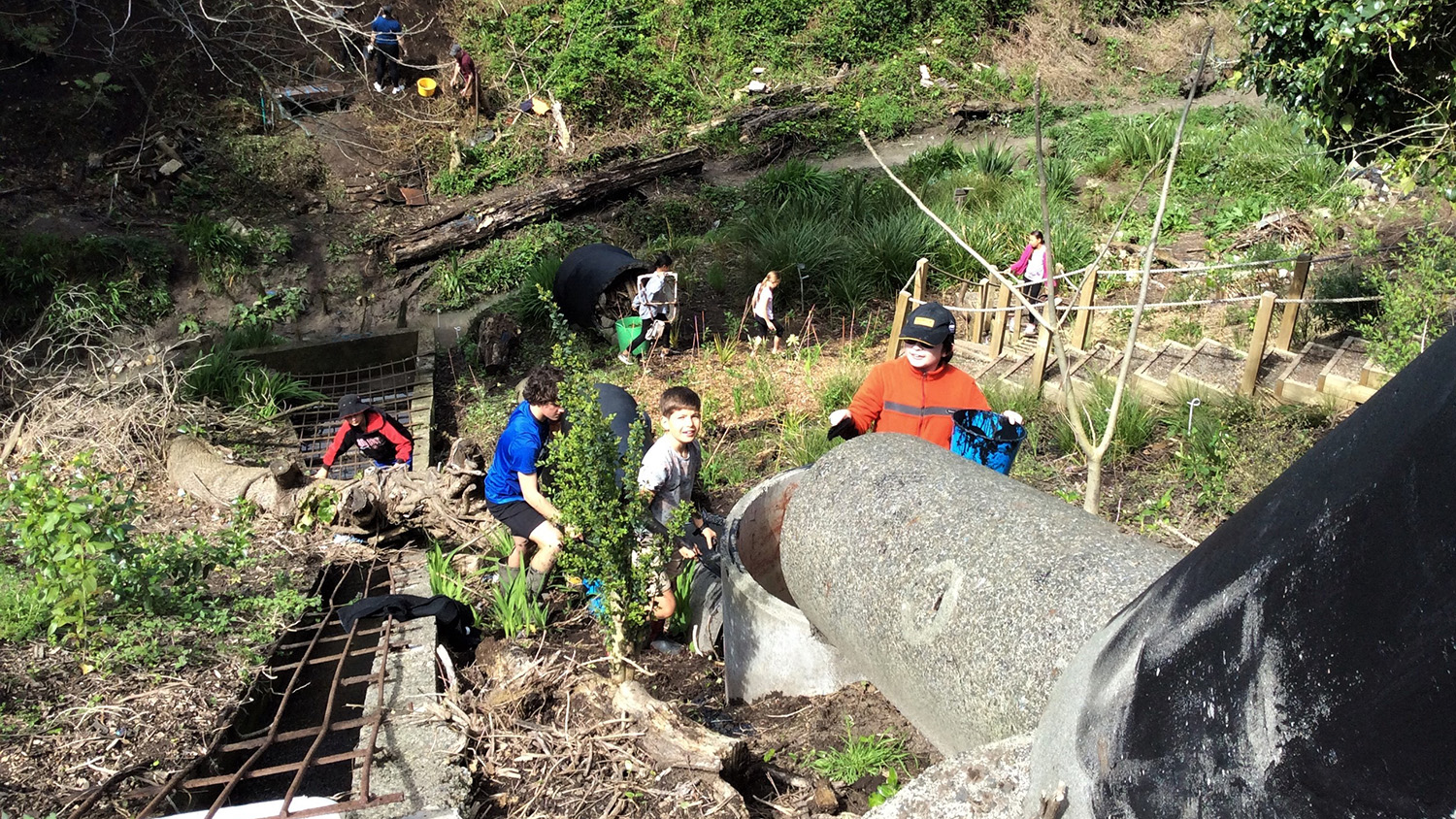"The kids are learning all the time – like how the planting of native plants creates habitat for our native wildlife and helps control erosion to improve water quality. We even have a school nursery now where the kids grow their own plants from eco-sourced mānuka, karamu and mahoe seeds."
- Project leader and teacher Julie Yeoman
Fenced off and forgotten, the gully at Maeroa Intermediate School lay out of bounds for decades, used only as a dumping ground for old tyres, kitchen appliances, plastics and bottles.
Looking down into the gully, it was a mass of ivy, jasmine, pampas, tradescantia, woolly nightshade, privet, blackberry, onion weed and mignonette vine smothering native plants and the rubbish, and displacing habitat for native species.
Now, it’s become an “outdoor classroom”. For the past year and a half, Maeroa Intermediate students have been getting rid of the weeds and the rubbish and planting native trees.
Enviroschools facilitator Adrienne Grant says the transformation has been quite astounding, even though the work has only just begun.
“They are in this for the long haul. It was quite a mess down there before and now large sections have been cleared and replanted with natives, and steps have been built into the gully."
 Project leader and teacher Julie Yeoman says the students are learning all the time, “like how the planting of native plants creates habitat for our native wildlife and helps control erosion to improve water quality”.
Project leader and teacher Julie Yeoman says the students are learning all the time, “like how the planting of native plants creates habitat for our native wildlife and helps control erosion to improve water quality”.
“They have even set up a school nursery where they are growing their own plants from eco-sourced mānuka, karamu and mahoe seeds. At last count there were over 2000 trees growing in the nursery.”
Between 10-20 students turn up every Tuesday and Thursday after school to help with various tasks like weeding, planting and looking after the seedlings in the nursery. Once a month there is a community working bee on a Saturday morning. The students regularly give tours of the gully to teachers and students from other schools, and community members are coming forward with donations of plants and asking for ways to help.
All this hard work by the school was celebrated in December when it was recognised as a silver level Enviroschool.
Enviroschools is a nationwide programme supported by Toimata Foundation, founding partner Te Mauri Tau, and a large network of regional partners, including Waikato Regional Council.
At the beginning of the project, Waikato Regional Council staff gave the students a crash course in gully restoration, including biosecurity, water quality monitoring and planting. The council, along with the Waikato Catchment Ecological Enhancement Trust, also helped fund remedial works to open and stabilise the stream channel.
“My favourite part of being in the Envirogroup is making new friends and connecting with nature,” says Andii, one of the students who is is heavily involved in the project.
“I really like being in the gully and the new challenges that it brings,” say student Alyssa.
The students will be setting up traplines for possums and rats through the gully this year, with help from Predator Free Hamilton, which they will regularly check as part of the project.
Waikato regional councillor Jennifer Nickel says she’s blown away by what the school has achieved so far. “Their gully restoration is phenomenal. It had been a dumping ground for decades, and they have turned it around and brought together a community who love it and want to take care of it.”
Hamilton city councillor Sarah Thomson says the project is inspiring.
“The city council has set the goal of increasing native habitat cover in Kirikiriroa Hamilton from 2 per cent to 10 per cent of the city’s land area, which is what is needed for nature to thrive within the city. Maeroa’s project will play a really important part in reaching that goal.”
 Maeroa Intermediate School gully before
Maeroa Intermediate School gully before
 Maeroa Intermediate School gully after
Maeroa Intermediate School gully after



